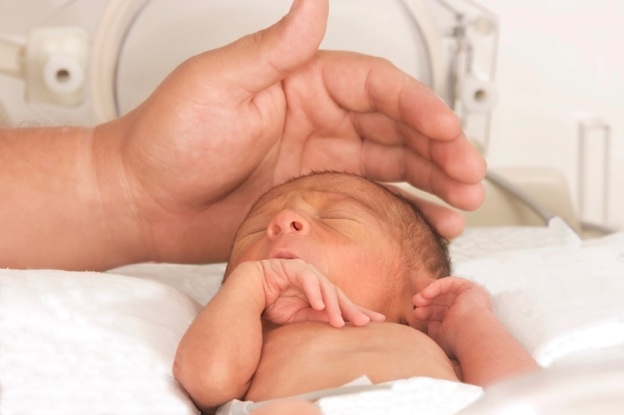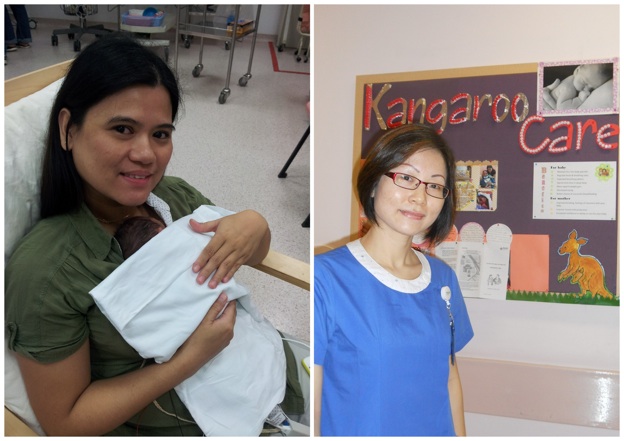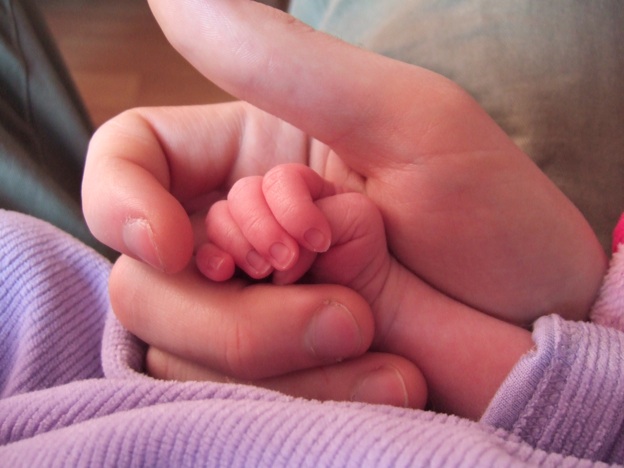SingaporeMotherhood | Baby & Toddler
May 2012
Premature babies: Causes, health issues, and care

Having featured the stories of Dewi and Joycelyn, two mothers whose babies were born prematurely, we now examine the causes of premature labour and some health issues which pre-term babies face.
CAUSES OF PREMATURE DELIVERY
A study in the Singapore Medical Journal defines a premature baby as “a child born earlier than 37 completed weeks of gestation”. The article estimates that between ten and 12 per cent of the births in Singapore are premature.
Although over half of the women who deliver prematurely do not have any known risk factors, a study of 20,723 single births at NUH between January 1986 and November 1991 found that teenage mothers, women with lesser education, those with no antenatal care, and mothers who have had three or more previous deliveries have a higher risk of delivering prematurely.
[banner][/banner]
In addition, the Ministry of Health’s 2001 Clinical Practice Guidelines for Management of Preterm Labour found that underweight women, smokers, those with previous pre-term deliveries, multiple pregnancies, cervical incompetence, uterine abnormalities and pregnancy complications have a higher risk of delivering prematurely.
Just as unexpectedly as premature labour begins in some mothers, Baby Centre estimates that it may also stop by itself in roughly 50 per cent of women, while premature delivery cannot be prevented in the remaining cases.
HEALTH ISSUES IN A PREMATURE BABY
As the organs and muscles of a premature baby have had less time to develop compared with those in a full term baby, premature babies may be born with health problems, or have developmental issues later in life. Depending on how early the baby was born, he or she may also have the following problems:
Apnea
As the part of a premature baby’s brain which controls breathing is not fully developed, such babies may suffer from apnea, where they may stop breathing for fifteen to 20 seconds at times. Premature babies are monitored closely, and should they stop breathing, nurses will stimulate the baby by rubbing his back, hands and legs.
Patent Ductus Arteriosus
When the baby is in the womb, its lungs are not in use as the foetus receives oxygen from the mother through its umbilical cord. Thus, blood does not need to flow from the heart to the lungs, but is diverted to the rest of the body via the ductus arteriosus, a “hole” connecting two major blood vessels.
In a full term baby, this hole normally closes substantially within twelve to 24 hours of birth, and is sealed within three weeks. However, it may remain open in a premature baby with a birth weight below 1,500 g, resulting in an incorrect blood flow. Such babies may have breathing difficulties or a heart murmur. This hole may be closed through surgery, or by giving the baby medication.
Hernia
The abdominal muscles of a premature baby may not be fully closed or sufficiently strong at the time of birth. Thus, a hernia, or lump under the skin, may be formed as a result of fluid, tissue or internal organs like the intestines protruding out of the tummy or groin through a gap in the muscles. Surgery is required to close this gap.
Retinopathy of Prematurity (ROP)
This condition occurs when the blood vessels in the eyes of a premature baby develop abnormally. Babies with a birth weight under 1,500 g are at higher risk of developing ROP.
Depending on the severity of the condition, ROP may recover by itself, require laser therapy or even surgery. In mild cases, babies may recover completely, while severe cases may lead to short-sightedness or blindness.
KANGAROO CARE IN THE HOSPITAL

(left) Ms Rosalyn Brigala Cabrera doing Kangaroo care (Photograph courtesy of NUH), and Nurse Clinician, Ms Zhang Suhe, chairperson of the neonatal parent support group at NUH (right).
Performing Kangaroo Care
Parents of pre-term babies can play a role in their child’s development by performing a technique known as “kangaroo care” in the hospital once the baby is strong enough to be handled.
Ms Zhang Suhe, a Nurse Clinician from the Department of Neonatology, National University Hospital (NUH), describes this as “direct skin-to-skin contact between the baby and the parent’s bare chest, with the baby wearing only a diaper and an optional hat.
“The baby is placed in the frontal position, vertically or semi-reclined on the parent’s chest with her head turned sideways but with her neck not extended or flexed. The parent may wear clothes which are loose fitting or front-opening to accommodate the baby, and use a nursing cover.”
It is recommended that parents carry out kangaroo care for at least an hour per session. However, parents may continue for several hours as long as they are comfortable. Ms Zhang further suggests that parents keep to a regular time each day so as to help their baby settle into a routine.
Benefits of Kangaroo Care
Kangaroo care allows the parent’s body heat to warm the baby, and assures her as she can hear her parent’s heartbeat. Pre-term babies carried in this manner tend to sleep more soundly, allowing their body to channel more resources towards growing and gaining weight. Ms Zhang cites the following evidence-based benefits of kangaroo care:
• Promotes parent–infant bonding
• Strengthens the family role in the care of a fragile infant
• Improves sleep organisation
• Increases rate of infant growth
• Shortens length of hospital stay
• Helps to regulate baby’s heart and breathing rate
• Increases the mother’s milk supply
• Increases success with long term breastfeeding
• Decreases nosocomial infection/sepsis rate
• Improves neuro-behavioural development
• Reduces risk of mortality
Suitability for Kangaroo Care
Despite the numerous benefits of kangaroo care, this method may not be recommended for everyone and individual hospitals have guidelines for determining the suitability of patients.
Ms Zhang shares that at NUH, babies must be medically stable and not be intubated with invasive and crucial tubes. Mothers should not be suffering from post-natal depression. In addition, parents should not have a fever, flu-like symptoms or an infectious skin disease over the chest.
COMMON DEVELOPMENTAL PROBLEMS AND THERAPIES
Because premature babies often have to stay in the neonatal intensive care unit, the stimuli which they are exposed to are different from those which a full term baby receives.
Ms Alicia Lim, a Senior Occupational Therapist with the Women’s Emotional Health Service and Rehabilitation Centre, NUH, explains: “A large amount of handling is required during the medical care of the baby in the ward, such as temperature checks and having medical equipment attached to parts of the body for monitoring. Compare this to the term baby who gets to be at home and is handled only during feeding, bathing and the occasional play time.
“Eventually, the necessary, yet excessive handling may result in the child having excessive exposure to various stimuli such as touch and sound. Some babies may even present with some sensory sensitivity to touch. On the other hand, the baby is in a fragile medical state and may not be able to engage with the family in activities such as brief periods of play or normal feeding. Therefore these babies who do not get as much opportunity to be carried in different positions, interact, and play may lag behind in terms of developmental milestones when compared to their peers.”
In addition, Ms Lim notes that there is a “higher rate of the premature child having a lower cognitive developmental ability, compared to peers of the same age. For instance, a toddler at the corrected age of 18 months may only be able to play like a nine-month-old child.”
As a result, premature babies may require therapy to train the brain and muscles to perform basic functions.
Speech therapy trains the muscles involved in chewing, swallowing and talking, while physical therapy helps develop gross motor skills and the correct muscle tone required for movement. Occupational therapy develops the fine motor skills required for daily activities such as manipulating toys, self-feeding and other self-care skills. It also aids babies in managing their sensory responses to react appropriately to touch, sound, and lights.
In designing a suitable rehabilitation programme for the child, Ms Lim emphasises the importance of considering the child’s medical condition and other factors that may contribute to his development. Parents are encouraged to work closely with the medical and rehabilitation team to discuss the child’s goals and therapy course as each child has different needs.
“The medical team is also able to support parents in understanding their child’s medical condition and aligning their expectations of the child to the child’s capabilities,” she adds.
PARENT SUPPORT GROUPS
Parents who are caring for premature babies need not journey alone as hospitals such as NUH and the KK Women’s and Children’s Hospital have support groups comprising of other parents, medical personnel and social workers who can offer advice and encouragement to them.
All content from this article, including images, cannot be reproduced without credits or written permission from SingaporeMotherhood.
Follow us on Facebook, Instagram, and Telegram for the latest article and promotion updates.






